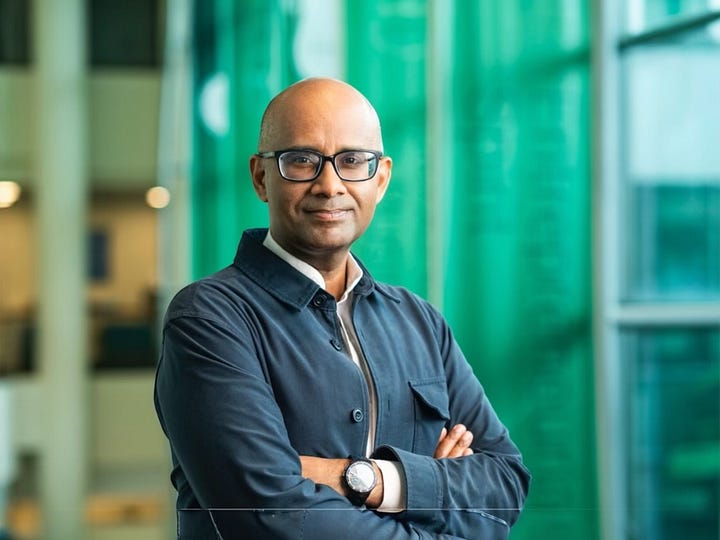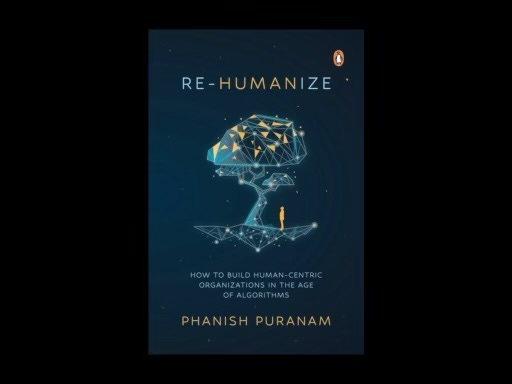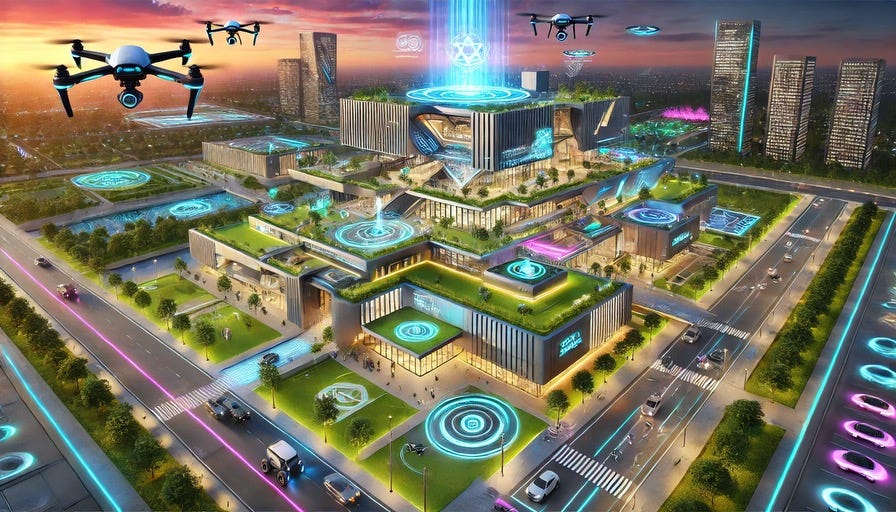

We stand at a crossroads where the future of work is being shaped not just by artificial intelligence but by the decisions we make about how to integrate it into our lives.
In the rush toward automation, we often focus on efficiency—how AI can streamline workflows, make split-second decisions, and eliminate redundancies.
But what if we’ve been asking the wrong question? Instead of wondering how AI can do more, we should be asking: How can AI make us more? More creative. More connected. More human.
As someone who has spent years examining the human side of technology, business, and philosophy, I find this question deeply compelling.
My journey has been shaped by an obsession with the interplay between efficiency and meaning—whether through my exploration of Taoism, my studies in social capital, or my reflections on the nomadic wisdom of human experience. The more I engage with these ideas, the clearer it becomes that the best technology doesn’t replace us—it amplifies our humanity.
Phanish Puranam’s “Re-Humanize: How to Build Human-Centric Organizations in the Age of Algorithms” offers a timely wake-up call. As a professor of strategy and organization design, he challenges the assumption that AI’s inevitable role is to replace human labor.
Instead, he envisions a world where AI is a tool for amplifying human agency, deepening collaboration, and fostering meaningful work. His message is clear —
AI should serve people—not the other way around.
The Illusion of Efficiency vs. The Reality of Meaning
For decades, businesses have been obsessed with efficiency. The rise of AI has only intensified this focus, as algorithms optimize everything from supply chains to hiring decisions.
It’s a logical progression—machines are faster, more precise, and less prone to error than humans. But here’s the paradox: efficiency alone does not create thriving organizations.
I’ve worked in healthcare administration, a field where AI could do wonders in streamlining scheduling, optimizing patient flow, and automating compliance paperwork. But if efficiency comes at the expense of human touch, does it truly serve its purpose?
When a patient interacts with a machine instead of a compassionate nurse, when a hiring algorithm filters out candidates without human discernment, when AI decides who gets an organ transplant based on pure statistics—what have we lost?
Contrast this with human-centric organizations, where AI is designed to enhance rather than replace. These companies use technology not to eliminate jobs, but to free employees for higher-order thinking, deep work, and relationship-building.
The difference is stark: one model optimizes for productivity, the other for purpose. The businesses that thrive in the AI era will be those that understand that efficiency is meaningless without meaning.
Will AI Flatten or Reinforce Hierarchies?
One of the most radical possibilities AI offers is the restructuring of workplace power dynamics. At first glance, AI appears to be a democratizing force—by analyzing data and making unbiased recommendations, it has the potential to distribute decision-making power more evenly across organizations. But as Puranam points out, AI can just as easily reinforce control from the top.
This tension fascinates me. As a nomadic thinker and entrepreneur, I’ve always believed in decentralized power—whether in organizations, politics, or creative communities.
But I’ve also seen how technology can be wielded as a tool of control. AI, if misused, could create a world where power is concentrated in the hands of a few who control the algorithms, while the rest of us become passive data points.
If AI is used primarily for surveillance, performance tracking, and micromanagement, organizations may appear flatter but actually become more centralized.
Leaders gain greater control, wielding AI-generated data to make decisions with little room for human input. Employees are left executing tasks dictated by algorithms, their autonomy reduced to whatever the system deems necessary.
But there’s another path. If AI is used to enhance collaboration, provide insights rather than mandates, and facilitate independent problem-solving, it can truly distribute power.
In this vision, AI becomes a partner—not an overseer. The best organizations will be the ones that use AI to empower people, not control them.
Trust: The Missing Ingredient in AI Adoption
AI adoption isn’t just a technological shift—it’s a psychological one. The greatest barrier to widespread acceptance of AI isn’t its capabilities, but rather the trust (or lack thereof) people have in its decisions.
Employees resist AI-driven decisions when they feel like they have no say in the process, when they fear they are being replaced, or when they don’t understand how the algorithm arrived at its conclusions.
This resonates with my experience studying Taoism and the philosophy of flow. Trust—whether in life, in organizations, or in technology—comes from alignment, not force. AI cannot simply be imposed from the top down; it must be designed to work with human intuition, not against it.
Puranam introduces the concept of “ensembling”—a model where AI and humans work in collaboration, rather than in isolation. Consider a doctor who uses AI-generated diagnostics not as a final verdict but as one input among many. This approach doesn’t just lead to better outcomes—it preserves critical human skills and decision-making authority.
The key takeaway? AI must be transparent, explainable, and designed for collaboration. Organizations that embrace this will build AI systems people trust, respect, and even rely on—without feeling like they are being replaced.
Rethinking Productivity in an AI-Driven World
Historically, businesses have measured success in terms of output—how much is produced, how fast, how efficiently. But as AI takes over execution-based tasks, Puranam argues that organizations need to shift their definition of productivity.
The future of work will not be defined by how much gets done, but by what kind of work is being done.
Personally, I see this as an opportunity to redefine work itself. If AI is handling repetitive tasks, that opens up space for us to create, to connect, to innovate. But that only happens if we make conscious choices to value creativity and human connection as much as we value speed and automation.
A Vision for AI-Driven Human Flourishing
Puranam’s message is a bold one: AI should not erode our humanity but enhance it. Organizations that embrace this philosophy will thrive, not because they are the most automated, but because they are the most human-centric.
What does this look like in practice?
💥 AI that enhances collaboration, not isolates workers.
💥 Leaders who see AI as a tool for empowerment, not surveillance.
💥 Workplaces where AI handles the mundane, freeing people for creativity and connection.
The real future of AI isn’t about efficiency—it’s about flourishing. The companies that recognize this won’t just lead in innovation; they’ll redefine what it means to work, create, and thrive in the digital age.
The choice is ours: do we build a world where AI serves humanity, or one where humanity serves AI? The future of work depends on how we answer that question—today.
Would you be kind enough to consider joining as a paid member supporter. Or feel free to tip me some coffeehouse love here if you feel so inclined.
Your contributions are appreciated!
Every bit counts as I strive to deliver high quality feature articles into your inbox on a regular basis. Never any paywalls, just the opportunity to foster community, connection, and conversation one book at a time.





